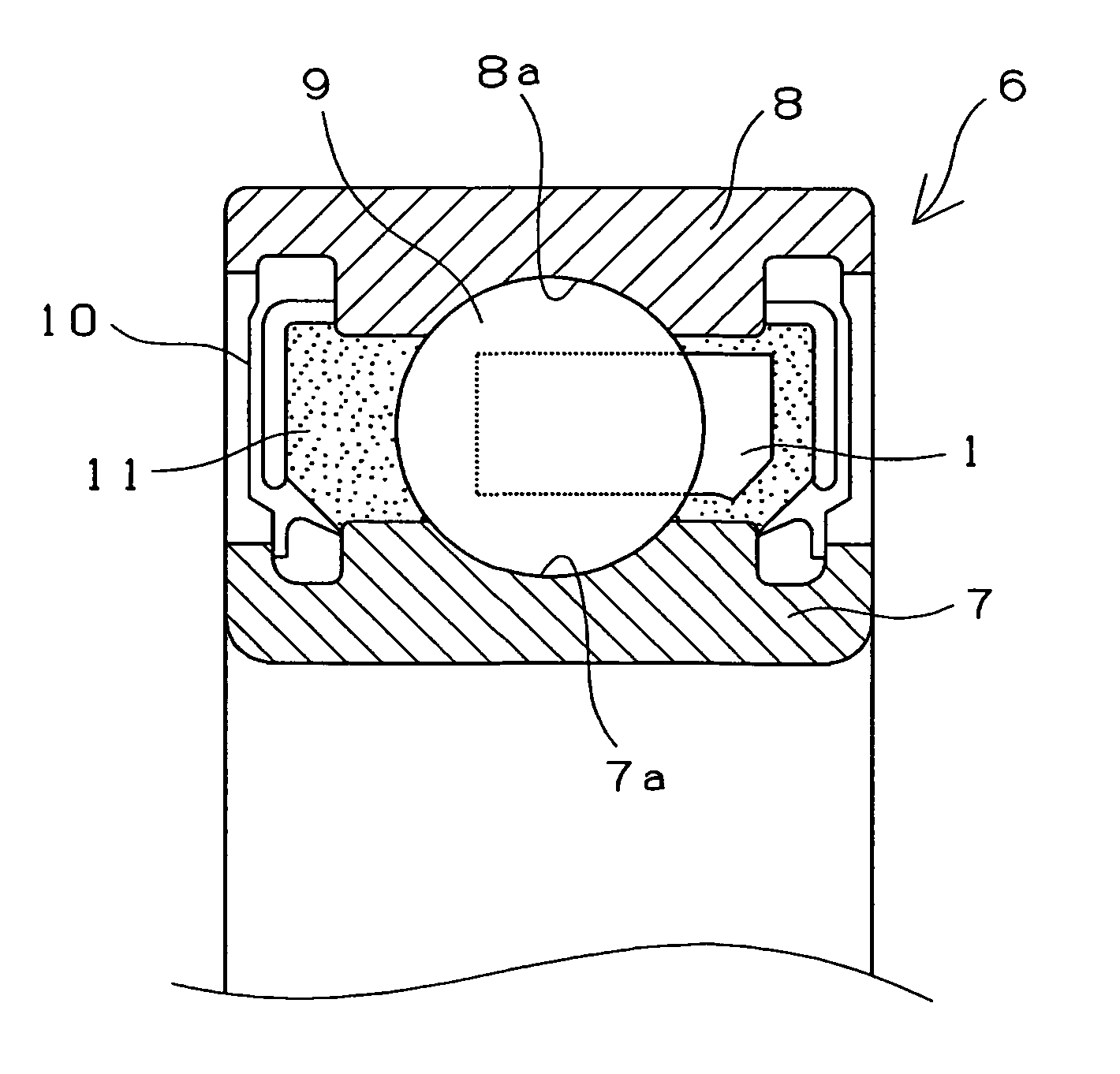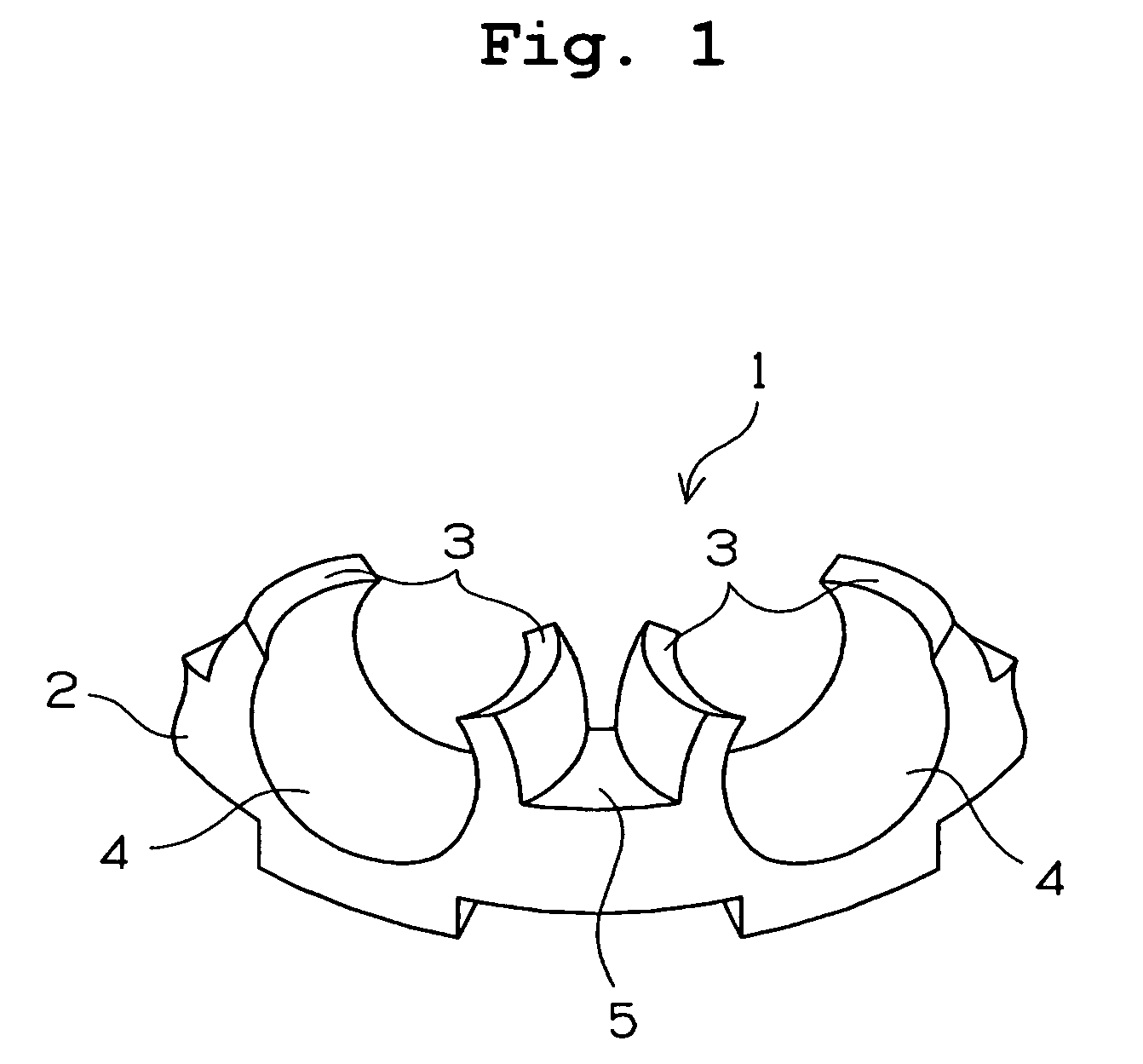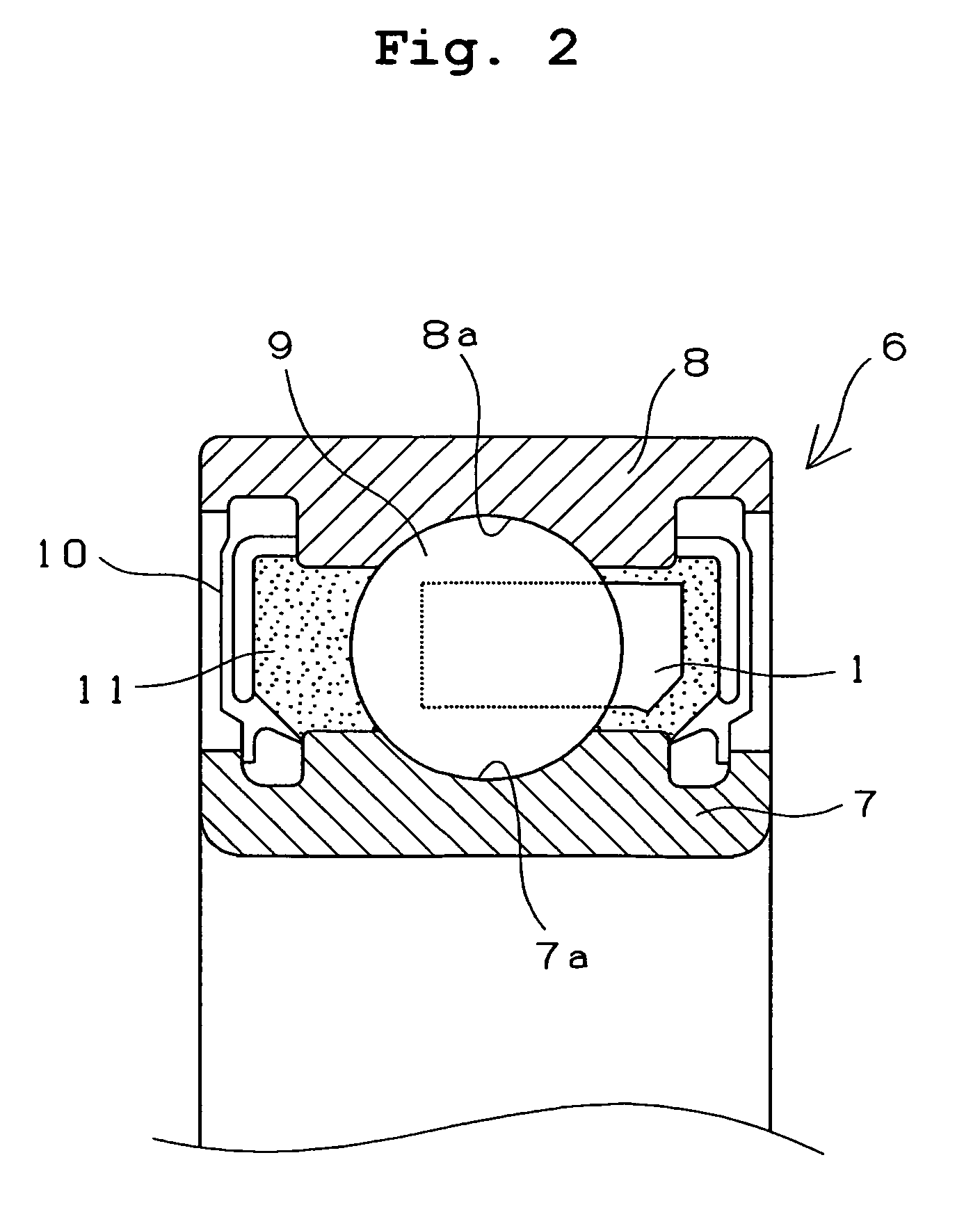Retainer for rolling bearing, and rolling bearing
a technology of rolling bearings and retainers, which is applied in the direction of shafts and bearings, mechanical equipment, rotary machine parts, etc., can solve the problems of large torque fluctuation during the rotation of the rotary shaft, large bearings, and large rotary shafts, and achieve excellent durability, small torque fluctuation, and small torque
- Summary
- Abstract
- Description
- Claims
- Application Information
AI Technical Summary
Benefits of technology
Problems solved by technology
Method used
Image
Examples
example 1
[0151]Powder of the ultra-high-molecular-weight polyethylene (MIPELON XM220 produced by Mitsui Chemicals Inc.) and powder of sodium benzoate (reagent produced by Wako Pure Chemical Industries, Ltd.) were mixed with each other at a volume ratio of 50:50 for five minutes by using a mixer to obtain mixed powder. The obtained mixed powder was molded into a disk having a diameter of φ30 mm×thickness t 5 mm by a heating compression molding method (200° C.×30 minutes). The molding was cleaned with hot water having a temperature of 80° C. by using the ultrasonic cleaner for 10 hours to elute the sodium benzoate. Thereafter the molding was dried at 100° C. for eight hours to obtain a porous article having an interconnected hole porosity of 48%. The porous article was impregnated with poly-α-olefin oil (PAO) (SYNFLUID 801 (viscosity: 46 mm2 / s (40° C.) produced by Nippon Steel Chemical Co., Ltd.) at 60° C. under vacuum. The oil impregnation percentage was 45% with respect to the entire volume....
example 2
[0152]Powder of ethylene tetrafluoride resin (M15 produced by DAIKIN INDUSTRIES, LTD.) and the powder of the sodium benzoate (reagent produced by Wako Pure Chemical Industries, Ltd.) were mixed with each other at a volume ratio of 50:50 for five minutes by using a mixer to obtain mixed powder. The obtained mixed powder was molded into a disk having a diameter of φ30 mm×thickness t 5 mm by the heating compression molding method (350° C.×30 minutes). The molding was cleaned with hot water having a temperature of 80° C. by using the ultrasonic cleaner for 10 hours to elute the sodium benzoate. Thereafter the molding was dried at 100° C. for eight hours to obtain a porous article having an interconnected hole porosity of 48%. The porous article was impregnated with synthetic hydrocarbon oil (LUCANT HC-20 produced by Mitsui Chemicals Inc. (viscosity: 155 mm2 / s (40° C.)) at 100° C. under vacuum. The oil impregnation percentage was 44% with respect to the entire volume. By using this speci...
example 3
[0153]Powder of polyether ether ketone (PEEK) resin (150PF produced by Victrex Inc.), carbon fiber, and the powder of the sodium benzoate (produced by Wako Pure Chemical Industries, Ltd.) were melted and kneaded at a volume ratio of 50:10:40 by using a Brabender to obtain mixed powder. The obtained mixed powder was molded into a disk having a diameter of φ30 mm×thickness t 5 mm by the heating compression molding method (350° C.×30 minutes). The molding was cleaned with hot water having a temperature of 80° C. for 10 hours by using the ultrasonic cleaner to elute the sodium benzoate. Thereafter the molding was dried at 100° C. for eight hours to obtain a porous article having an interconnected hole porosity of 39%. The porous article was impregnated with the poly-α-olefin oil (PAO) (SYNFLUID 801 (viscosity: 46 mm2 / s (40° C.) produced by Nippon Steel Chemical Co., Ltd.) at 60° C. under vacuum. The oil impregnation percentage was 38% with respect to the entire volume. By using this spe...
PUM
| Property | Measurement | Unit |
|---|---|---|
| porosity | aaaaa | aaaaa |
| hole porosity | aaaaa | aaaaa |
| temperature | aaaaa | aaaaa |
Abstract
Description
Claims
Application Information
 Login to View More
Login to View More - R&D
- Intellectual Property
- Life Sciences
- Materials
- Tech Scout
- Unparalleled Data Quality
- Higher Quality Content
- 60% Fewer Hallucinations
Browse by: Latest US Patents, China's latest patents, Technical Efficacy Thesaurus, Application Domain, Technology Topic, Popular Technical Reports.
© 2025 PatSnap. All rights reserved.Legal|Privacy policy|Modern Slavery Act Transparency Statement|Sitemap|About US| Contact US: help@patsnap.com



